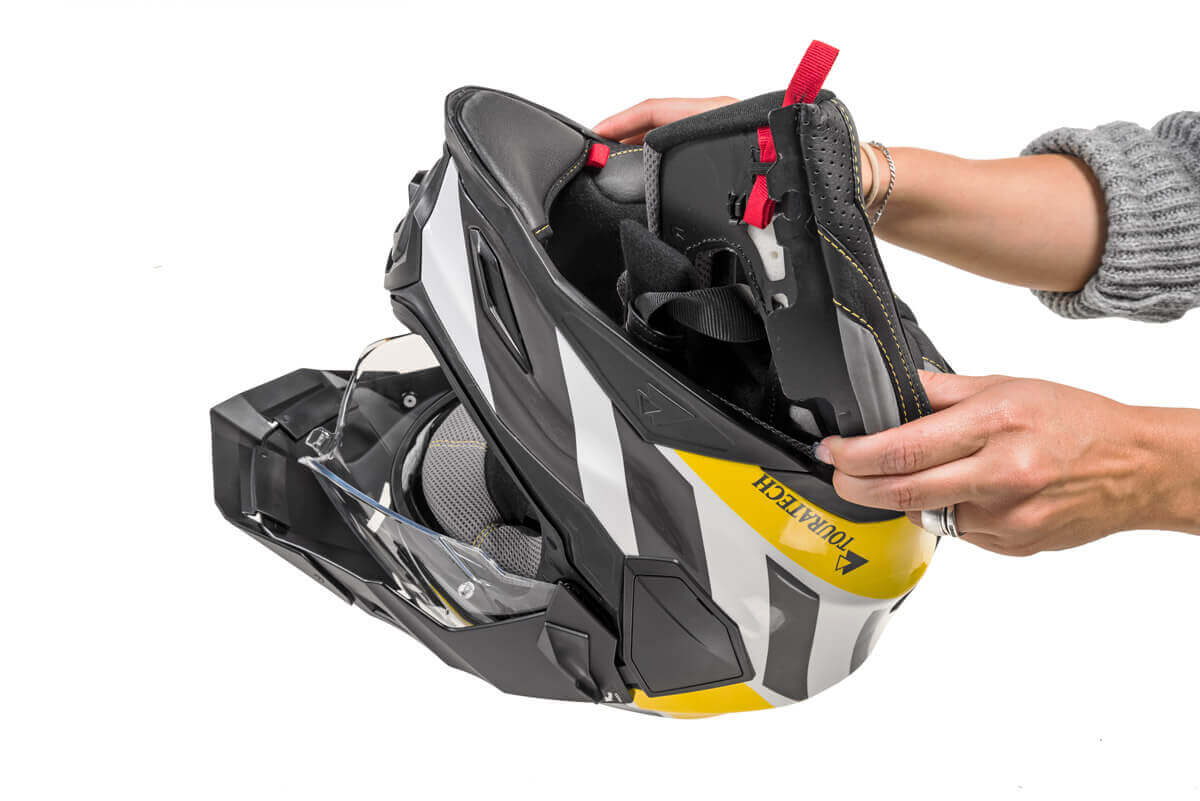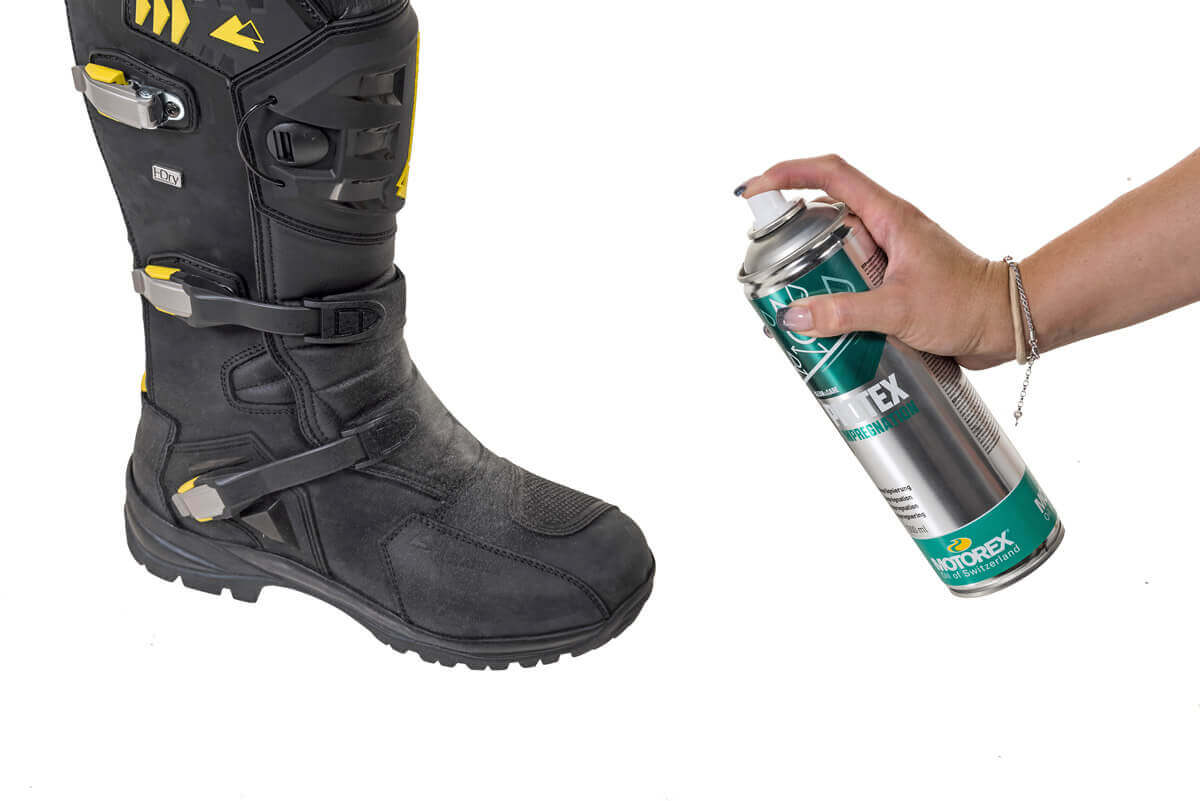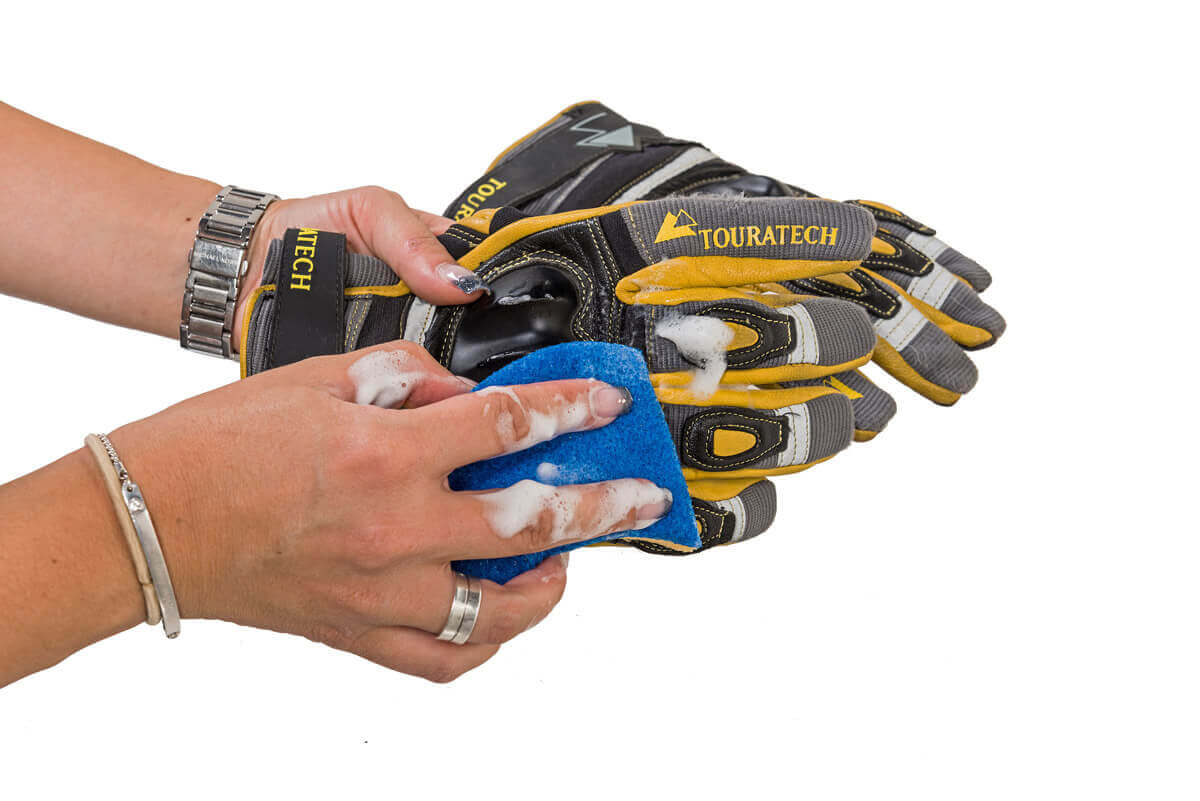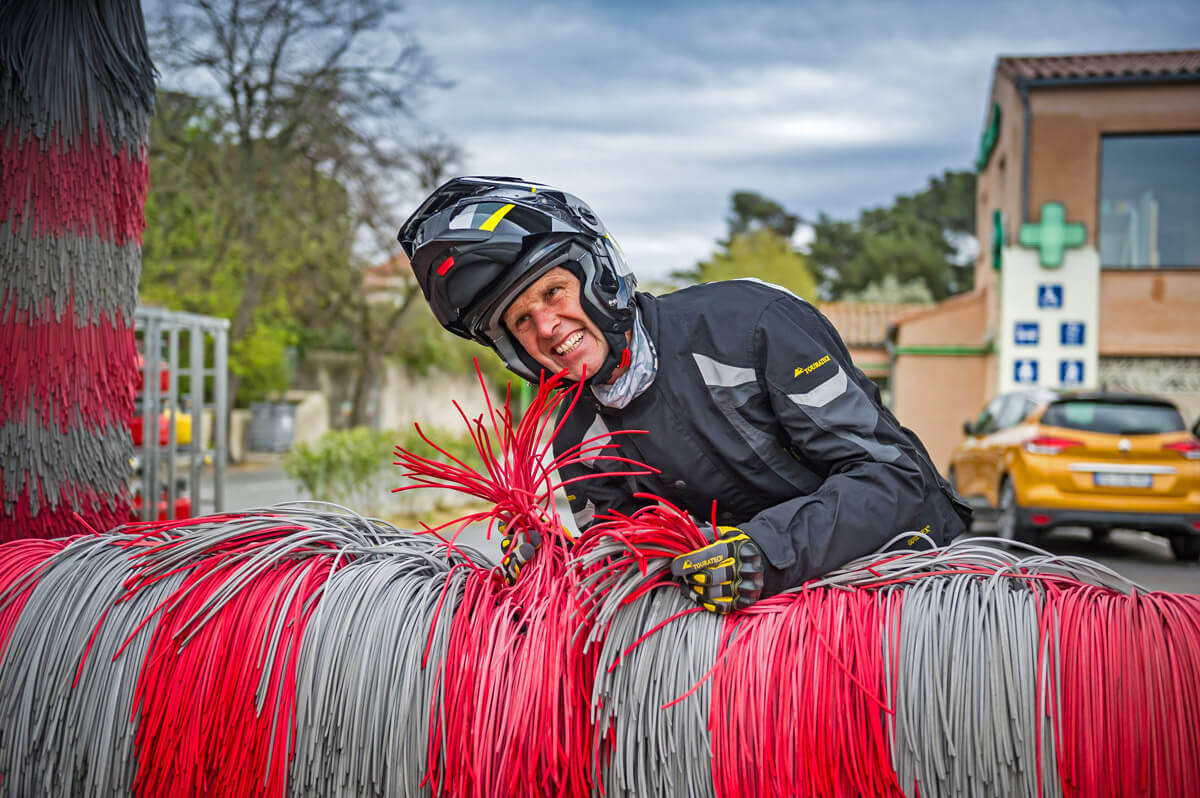Motorcycle equipment can only fulfil its function for many years if given regular care. We will show you how textile suits, helmets, boots and gloves can be kept in good shape with an acceptable amount of effort.
Soot, sweat, fuel splashes, road dirt, road salt, pollen and insect remains - the list of substances with which motorcycle clothing becomes soiled is far from complete. And yet quite a few motorcyclists deny their outfit the care it actually deserves. Laziness? In most cases, most likely not. Instead, it is often uncertainty about how modern riding gear should actually be treated. For example, there is a persistent rumour stating that climate membranes are destroyed when washed. So before you ruin your expensive suit, you'd rather do nothing. But it is precisely this inactivity that considerably reduces the effectiveness of modern functional clothing. Regular care, on the other hand, is an important prerequisite for long durability and full functionality.
Textile clothing
Modern textile clothing should be washed regularly. How often depends on the degree of soiling and thus on the frequency of use and the external conditions. All the substances that act on the clothing during use are deposited on and between the fibres. This means that the dirt not only blocks the air permeability of the fabric, which is necessary for breathability, it also attracts water. When soiled clothing gets wet, it absorbs much more water than clean clothing. A heavy, clammy feeling is the result. And there is also the threat of trouble originating inside. Salts from sweat in high concentrations can damage the climate membrane. So, give it a wash.
Basic rule number one for clothing care is: read the care instructions on the label! Here the manufacturer has summarised the most important dos and don'ts.
Before washing, remove the lining and all protectors, and close the protector pockets. This also applies to all other Velcro and zip fasteners. Otherwise, the Velcro or the little teeth can damage the material through abraision.
The washing machine should also be prepared. It is best to run a short wash cycle with no detergent at all. This serves to remove fabric softener residues in the system. Fabric softener is the enemy of all functional textiles. It not only clogs the pores of the membrane, it also wraps itself around the textile fibres and in this way prevents the impregnator from adhering. But more on this later.
The wash cycle
Functional clothing is always washed with liquid detergent. This spreads better and can be washed out leaving no residues. It is best to use a product specially designed for functional textiles. Suitability specifically for garments with a climate membrane is often indicated on the packaging with a corresponding note.
And now you're ready to go. Add liquid detergent to the appropriate compartment and select the programme according to the care label. This will generally be "easy care" at 30 or 40 degrees. Refrain from spinning to avoid abrasion damage. Delamination and even rupture of the membrane can also occur during spinning, even during a short spin. To protect the material, jacket and trousers are washed individually.
Buy Motorex Protex / Helmet Care
Impregnation
After washing, functional clothing still needs to be impregnated. This serves to reduce the water and dirt absorption of the outer material. Some liquid detergents already contain an impregnator, if this is not the case it must be applied after the wash cycle. There are basically two ways to do this: liquid impregnator can be added in a further wash cycle, or spray impregnation can be applied to the textile after drying.
However, it should be noted that liquid impregnator can damage the membrane if used incorrectly, which may result in loss of the warranty claim. Touratech experts therefore recommend the Protex waterproofing spray from Motorex.
Whichever method you choose, you will need heat to activate the impregnator. This is most easily achieved in a tumble dryer operated on the lowest possible setting.
When impregnating, it is essential to also consider wear areas and suction barriers on sleeves, collar and jacket hem to reduce capillary effects (suction effects) to a minimum.
Helmets
Motorcycle helmets also need care. Regular cleaning of the visor with suitable products is a matter of course. But even the helmet shell can use a polish now and then. Even if quick success is tempting – aggressive substances such as solvents are taboo. Not only can the finish and decor suffer, but also the structure of the shell. And the vapours can even attack the impact-absorbing EPS dome inside. So it is better to work with a sponge and soap and a little patience.
For hygienic reasons, the textile inside the helmet should also be cleaned whenever necessary. To make this particularly easy, all Touratech helmets have a removable interior. This can be machine washed on a gentle cycle. Here, too, we recommend liquid detergents designed for functional clothing, which can be washed out leaving as little residue as possible. Do not wring out the helmet lining, let it air dry, refit it – and enjoy the fresh scent.

The interior of high-quality helmets, can be removed and washed in the machine.

Boots with leather parts must be cleaned thoroughly with a little water and soap and then impregnated.
Boots
Leather is much more sensitive than modern textile materials. Nevertheless, motorcycle boots can – and must – also be cared for regularly.
Dirt can be removed with a special leather soap, a little water and a sponge. Because damp cleaning as well as rain while riding remove grease and nutrients from the leather, thorough after treatment is necessary. Before that, however, the boots must be dried carefully. Avoid direct sun or oven heat in order to prevent the leather from cracking. Some care products must be applied to the still slightly damp leather – follow the instructions!
For boots with a climate membrane such as the Touratech Destino Touring 2 HDry, specialised care products are recommended to maintain the breathability of the leather. For coarser footwear, such as the Touratech EnduroX, classic leather grease can also be used. In the case of the Destino Adventure, where the membrane is located in the waterproof inner shoe, the user must weigh up whether they want particularly strong re-fatting or prefer to maintain the maximum breathability of the outer shoe. Use leather grease or a care spray for functional equipment as appropriate.
Boots
Leather is much more sensitive than modern textile materials. Nevertheless, motorcycle boots can – and must – also be cared for regularly.
Dirt can be removed with a special leather soap, a little water and a sponge. Because damp cleaning as well as rain while riding remove grease and nutrients from the leather, thorough after treatment is necessary. Before that, however, the boots must be dried carefully. Avoid direct sun or oven heat in order to prevent the leather from cracking. Some care products must be applied to the still slightly damp leather – follow the instructions!
For boots with a climate membrane such as the Touratech Destino Touring 2 HDry, specialised care products are recommended to maintain the breathability of the leather. For coarser footwear, such as the Touratech EnduroX, classic leather grease can also be used. In the case of the Destino Adventure, where the membrane is located in the waterproof inner shoe, the user must weigh up whether they want particularly strong re-fatting or prefer to maintain the maximum breathability of the outer shoe. Use leather grease or a care spray for functional equipment as appropriate.

Boots with leather parts must be cleaned thoroughly with a little water and soap and then impregnated.
Gloves
Many modern motorcycle gloves are made of a leather-textile mix. Here, too, leather is the more maintenance-intensive material. Remove the dirt carefully with a sponge, water and leather soap. After drying, treat the corresponding parts with leather care. As described for the boots, it is also important to use products that maintain breathability when wearing gloves with a membrane.
Despite all the prophecies of doom, caring for motorcycle clothing is not rocket science. And with a little care, there will be no damage to your outfit either. On the contrary: high-tech textiles can only retain their full functionality for many years if given regular care.

Gloves also benefit from occasional cleansing with soap and water. Care spray freshens up the leather parts.













